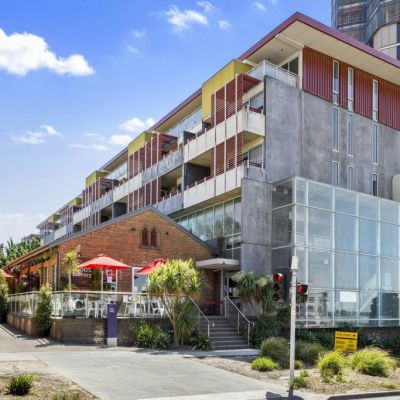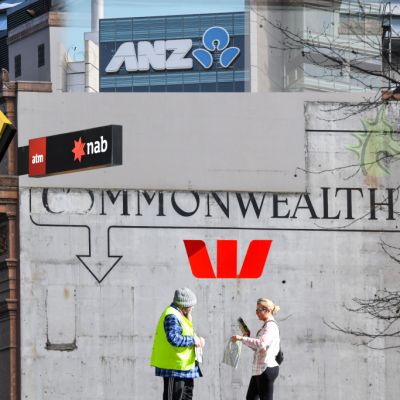Mortgage repayments could rise sooner than expected, as banks forecast earlier cash rate hikes

Home owners could face a rise in mortgage repayments of hundreds of dollars a month within two years, with the big banks predicting cash rate hikes well ahead of the Reserve Bank’s forecasts.
Borrowers would face an average variable mortgage rate of over 4.3 per cent from as early as 2023, new modelling shows, if recent forecasts for the cash rate to hit 1.25 per cent are reached.
While the Reserve Bank is expected to keep the cash rate on hold at the record low of 0.1 per cent at its Tuesday meeting and until 2024, several of the big banks are forecasting hikes before that – from as early as next year. And both Commonwealth Bank and Westpac expect the rate to hit 1.25 per cent in the third quarter of 2023 and late 2024, respectively.
Such a peak would pale in comparison to the 17.5 per cent seen in 1990 and only bring the cash rate back to June 2019 levels, but would be enough to add hundreds of dollars to monthly mortgage repayments and slow down housing demand, experts say.
Modelling from financial comparison website Canstar shows the average variable mortgage rate would lift from 3.21 per cent to 4.36 per cent, based on the current margin between the two rates.
A home owner who took out a $500,000 loan tomorrow would face their repayments jumping by about $300 per month to $2464 if the cash rate hit 1.25 per cent in 2024: that’s despite reducing their remaining loan to $468,770 after three years of repayments and assuming the banks only add on the cash rate increase.

Canstar group executive of financial services Steve Mickenbecker said home owners should be looking to get ahead on their repayments now if they could afford to because it would only become harder to pay off their principal in future.
While the forecast cycle may see a “modest” increase to a peak of 1.25 per, rates were likely to rise in the years that followed, he said.
Separate Canstar modelling showed average variable loan rates could reach more than 7 per cent in future if the 10-year bond yield returns to levels consistent with nominal gross domestic product growth of about 5 per cent, as assumed in the federal government’s recent Intergenerational Report. Bond yields are currently about 1.5 per cent.
If, for instance, the average variable loan rate hit 7.04 per cent in 2031, as it did in 2011, that same borrower who took out a $500,000 loan would pay about $900 more in monthly repayments than they do now – even after a decade of repayments.
Mr Mickenbecker said borrowing costs for fixed-rate loans were already rising and noted rising repayments could stress some buyers with larger loans.
High levels of household debt would limit the tightening cycle, Westpac chief economist Bill Evans noted when predicting cash rate hikes from 2023 and a peak of 1.25 per cent in 2024. The peak in the cycle was likely to be determined by the household sector’s sensitivity to rising rates given Australia’s high levels of household debt, he said.
Meanwhile, CBA expects interest payments as a proportion of disposable income to return to the recent average, lifting from 3.1 per cent to about 5 per cent.
Bank senior economist Belinda Allen said the rise to a “neutral” cash rate should not affect consumer spending, but it would be felt by individual borrowers – particularly those in the early stages of repayments — and could slow housing demand.
“For the one-third of Australians with a mortgage, their interest rates will lift … this will obviously see people have to put more of their disposable income away … but to not the levels that should hinder their ability to spend,” Ms Allen said.
The move to higher interest rates would be slowed by the large number of fixed-rate mortgages written over the past year, Ms Allen said, and the fact that those on variable rates had built significant buffers such as offset accounts and redraws, as well as other savings, which increased during the pandemic.
An expected rise in wages growth would also limit the impact of rate rises; however, Ms Allen stressed that looking at debt serviceability levels would be crucial when determining the cash rate.
Rising rates would also see housing market activity slow, Ms Allen added, noting recent increases in fixed-rate mortgage rates could take some of the heat of the property market, reducing the need for macroprudential measures to be reintroduced. Some banks have also lifted the floor interest rate at which new loans are tested, she said, which could start to reduce how much house hunters could borrow.
“Most borrowers don’t borrow at their full capacity anyway. It may impact at the margin, but is more just a signal that people need to expect rates to rise,” Ms Allen said.
She described it as another developing headwind for the housing market but said it would take more than that to see a significant change in activity given the strong ongoing growth in lending.
Mr Mickenbecker said borrowers should consider fixing all or part of their home loan and choose a fixed loan that provided flexibility to make additional repayments. He added they should make the most of low rates while they last, not settling for the average, with more than 190 loans currently offering rates below 2 per cent.
We recommend
We thought you might like
States
Capital Cities
Capital Cities - Rentals
Popular Areas
Allhomes
More










